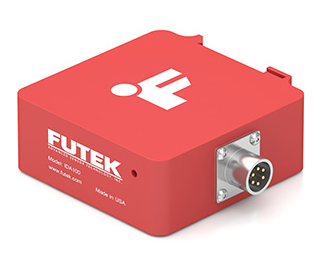



- B2B Industrial Supplier since 1999
- Shipping from our own warehouse in NL !
- Shipping in EU with DPD Traceable
- Reliable SSL & Secure Payments












FUTEK's IDA100, a digitally configurable amplifier with USB output, is an instrument offering users the unique ability to have both an amplified analog and digital output. The dual output features of the IDA100 are powered solely by the 5V output from the USB. This device also has a software selectable ±5V and ±10V analog output with a low noise value of 12 mVp-p (millivolt peak-to-peak) and a bandwidth of 1 kHz. Similar to our IAA analog amplifier series, the IDA100 was also designed with an integrated 35 mm DIN rail clip. The high retention USB connector ensures that the power supply to the IDA100 will not be jeopardized should the connector experience a tug or pull during use.
Features
Accessories Included
For connecting you sensor, there may be necessary special cable assemblees
The function of a load cell amplifier circuit is to capture the signal from the load cell or torque sensor and convert it into a higher level of an electrical signal. In order to do so, the mV/V low amplitude output of the load cell goes thru four different signal conditioning steps:
1) Excitation Voltage: Full-bridge load cells or torque sensors require an excitation voltage from the Wheatstone bridge amplifier to feed the strain gage Wheatstone bridge and generate their output signal as a ratio of the input excitation voltage.
2) Filtering: Analog sensor signals are susceptible to electrical noise and/or residual ripple voltage, which can distort or skew measurements. Noise needs to be filtered out before you can capture an accurate signal.
3) Amplification: A full-bridge strain gage sensor can output a signal in the nanovolt through millivolt range. When your DAQ or PLC is limited to measuring volts, you will need an strain gage amplifier to convert millivolts to a larger signal.
4) Signal conversion: The majority full-bridge load cells and force measurement sensors or transducers generate an analog output in the millivolt range (mV/V). Thus, signal processing is traditionally analog. So, if you req PLC or DAQ system requires an amplified analog (i.e.: 4-20 mA, 0-10 VDC) or a digital output (USB, SPI), the load cell or torque sensor needs a strain gage signal conditioner to convert the mV/V signal to the required signal output.
Check It ! Maybe you need this too ...